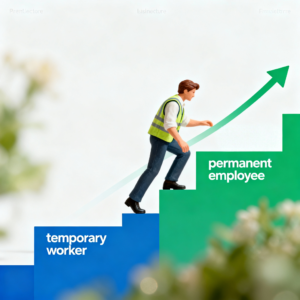
In today’s diverse workplace, teams often comprise members from various generational backgrounds, including Baby Boomers, Gen X, Millennials, and Gen Z. Each generation brings unique perspectives, skills, and values, which can be a powerful asset but also a potential source of misunderstanding and conflict. Building team cohesion across age groups is essential for maximizing productivity and fostering a harmonious work environment. Here are some effective strategies to navigate generational gaps and enhance team cohesion.
1. Foster Open Communication
Open communication is the cornerstone of any successful team. Encourage team members to share their ideas, experiences, and concerns openly. Create an environment where everyone feels heard and valued. Regular team meetings, open-door policies, and anonymous feedback channels can help facilitate this.
Tip: Implementing regular intergenerational workshops can help team members understand each other’s communication styles and preferences.
2. Promote Mutual Respect and Understanding
Respect is crucial for bridging generational gaps. Promote a culture of mutual respect where every team member, regardless of age, is valued for their contributions. Encourage team members to learn about and appreciate the unique strengths and experiences each generation brings to the table.
Tip: Organize team-building activities that highlight the diverse skills and backgrounds of team members. This can include storytelling sessions where employees share their career journeys.
3. Leverage Diverse Strengths
Each generation has its own strengths. For instance, Baby Boomers may bring extensive experience and a strong work ethic, while Millennials and Gen Z might offer fresh perspectives and technological savvy. Leverage these diverse strengths by assigning tasks that align with each team member’s skills and expertise.
Tip: Create mixed-age project teams to encourage knowledge sharing and collaboration. This can lead to innovative solutions and a more cohesive team dynamic.
4. Implement Flexible Work Practices
Different generations often have varying expectations regarding work-life balance and flexibility. While older generations may prefer traditional work hours, younger employees might value flexible schedules and remote work options. Implementing flexible work practices can help accommodate these differing needs and improve overall job satisfaction.
Tip: Offer a variety of work arrangements, such as flextime, telecommuting, and compressed workweeks, to cater to the diverse preferences of your team.
5. Provide Continuous Learning Opportunities
Investing in continuous learning and development opportunities can help bridge generational gaps. Provide training programs that cater to different learning styles and career stages. Encourage mentorship programs where experienced employees can share their knowledge with younger team members and vice versa.
Tip: Encourage reverse mentoring, where younger employees can teach older colleagues about new technologies and trends, fostering a culture of continuous learning and mutual support.
6. Encourage Cross-Generational Collaboration
Facilitate cross-generational collaboration by creating opportunities for team members to work together on projects and initiatives. This can help break down stereotypes and build stronger relationships across age groups.
Tip: Use collaborative tools and platforms that allow for seamless communication and project management, ensuring that all team members, regardless of their tech-savviness, can contribute effectively.
7. Celebrate Achievements and Milestones
Recognize and celebrate the achievements and milestones of all team members. This can help build a sense of community and appreciation within the team. Celebrations can be tailored to reflect the diverse interests and preferences of different generations.
Tip: Host regular team-building events, such as lunches, outings, or virtual gatherings, to celebrate successes and foster a sense of camaraderie.
Conclusion
Building team cohesion across age groups requires intentional effort and a commitment to understanding and valuing the unique contributions of each generation. By fostering open communication, promoting mutual respect, leveraging diverse strengths, implementing flexible work practices, providing continuous learning opportunities, encouraging cross-generational collaboration, and celebrating achievements, organizations can navigate generational gaps effectively. The result is a cohesive, innovative, and high-performing team that leverages the full spectrum of its members’ talents and experiences.




